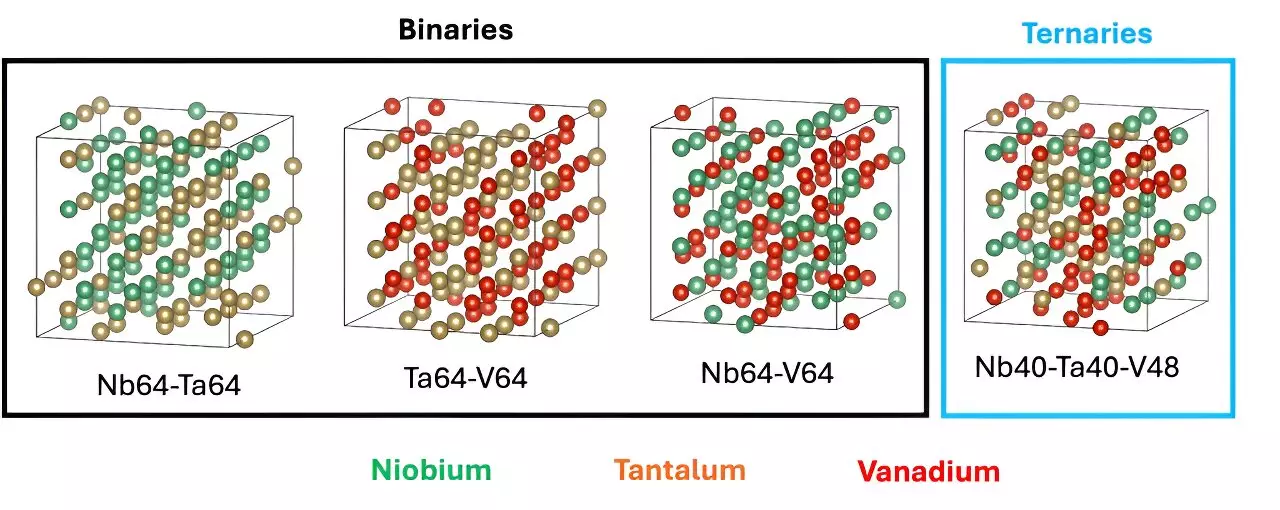The quest for efficient and robust materials in nuclear fusion technology has gained a significant ally: artificial intelligence (AI). A cutting-edge study spearheaded by Oak Ridge National Laboratory (ORNL), as part of the Department of Energy, has illustrated the transformative potential of AI in identifying new alloys crucial for the shielding of fusion reactor components. These findings herald a new era in nuclear fusion research, addressing longstanding challenges in the field.
Nuclear fusion, the process that powers the sun, promises a near-limitless source of energy if harnessed effectively. However, one of the primary hurdles in developing fusion reactors is the need for materials that can withstand extreme environments, particularly high temperatures and radiation. Traditionally, tungsten-centric alloys were the go-to materials due to their high melting points and durability. While these alloys perform well under intense conditions, they often falter when it comes to consistent shielding capability—a critical factor for the safety and efficiency of fusion plants.
Under the guidance of former AI Initiative Director David Womble, the project gained momentum, eventually falling under the ambit of the Artificial Intelligence for Scientific Discovery (AISD) initiative. Massimiliano Lupo Pasini, an AI data scientist at ORNL, championed the project, emphasizing the need for new alloys that exhibit superior mechanical properties at elevated temperatures. The published findings in the journal Scientific Data unveil a pivotal leap towards enhancing the capabilities of fusion reactors.
The ambition to replace traditional materials with novel and disruptive alloys presents a wealth of possibilities but also considerable challenges. Lupo Pasini and his team recognized that identifying potential metallic combinations is a monumental task due to the staggering number of possible alloy formulations. However, by leveraging AI technology, researchers can streamline the otherwise tedious trial-and-error process that typically involves extensive experimental work.
A collaborative effort between several experts—German Samolyuk, Jong Youl Choi, Markus Eisenbach, Junqi Yin, and Ying Yang enriched the team’s endeavors. These researchers, hailing from both the Computing and Computational Sciences Directorate and the Physical Sciences Directorate at ORNL, worked in unison to construct an AI model capable of sifting through vast datasets and pinpointing promising alloy candidates for further evaluation.
The foundational stage of the project required substantial computational resources and time, with significant contributions from the Perlmutter and Summit supercomputers. Lupo Pasini detailed the complexity involved in generating the necessary data; the process consumed over a year and required extensive computational effort. The AI model developed serves not only as a database for existing knowledge but also as a springboard for future explorations in materials science.
Navigating Future Challenges
Despite the achievements outlined, Lupo Pasini cautions that this initial phase represents only a fraction of the overall mission. The model must undergo further refinement to develop machine learning algorithms aimed at accelerating the discovery of new alloys. “To devise a new class of refractory high-entropy alloys, it is crucial to encompass multiple elements,” he states. However, the challenges do not stop at data generation; sophisticated quantum mechanical calculations integral to validating these new materials pose additional hurdles, taxing even the most advanced supercomputing resources.
The ultimate objective for the team lies in synthesizing a range of compounds derived from various elements in differing concentrations. By fostering a collaborative and innovative approach, the scientists at ORNL aim to revolutionize how materials for fusion reactors are conceived and developed. Lupo Pasini highlights that through AI, material scientists can significantly curtail the time and resources typically consumed by conventional methods, facilitating the discovery of alloys that could lead to groundbreaking advancements in fusion technology.
As the fusion energy landscape evolves, the integration of AI tools in alloy discovery offers unprecedented opportunities for innovation, accelerating the quest for not just new materials but also a sustainable energy future. Exciting times lie ahead for both scientists and the world as this transformative technology unfolds.


Leave a Reply
You must be logged in to post a comment.